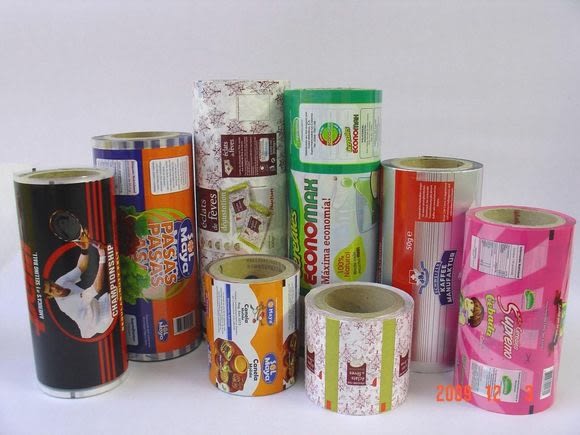In terms of manufacturing technology, Reifenhauser Extrusion is a leader in extrusion equipment. The company sees demand for high flexibility, short product changeover time, ultra-tight tolerances, and energy saving.
The trend is for wider lines over 5 m in Asia rather than Europe or the USA, and for 5- and 7-layer lines over 3m wide for high barrier film. Cast coextrusion is used to reduce the thickness of expensive layers like EVOH, and allows a wide range of film thickness on the same die.

The end use markets for barrier films include liquid packaging and MAP packs for meat, fish and cheese. The level of barrier required varies with the product, for example fresh fruit and vegetables tolerate a water vapour transmission rate (WVTR) of 10-3000 whereas baby food and dried coffee need a much higher seal of 0.7-3 and similarly for the oxygen transmission rate (OTR).
A typical 5-layer barrier might include outer layers of LDPE around EVOH in an adhesive /tie layer sandwich. As one example, an extrusion coated bread pack comprised OPET at 12 microns, LLDPE at 21 microns, tie layer 3 microns, EVOH 3 microns, tie layer 3 microns and an outer LLDPE layer at 20 microns.
Biaxially oriented films are found in barrier applications from MAP to vacuum skin packaging. Multiple bubble systems are used to produce many of these films from shrink bag and film to lidding films and GAP Srl provides systems for this. In a three-bubble line the plastic is extruded through a circular die and immediately water quenched; the resulting tube is then re-heated and blown and at this point the non-contact orientation occurs; the second bubble is air cooled and flattened, then a third bubble is annealed in ovens. Orientation improves mechanical properties, enhances impermeability, dimensional stability and gives a gloss effect.
The layer thickness in barrier films ranges from 25 microns down to 1440 Angstroms. Extrusion Dies Industries is involved in microlayer production and studied the gauge required to achieve the right properties. For example, the oxygen permeability of EVOH is around 10 cc/m2.day.atm at 4 microns thick and down to 1.4 at 25 microns thickness. Oxygen barrier properties also improve with a higher level of crystallinity, which in turn is affected by cooling rate, orientation.
Polyamide is often used for its barrier properties, for example in gas flushed barrier laminates for Dairy Crest resealable cheese packs. Ube has capacity to produce over 155 kT per year of PA at sites in Asia and Europe and copolymers of PA6 and 6,6 are produced for film use. They are found in applications such as shrink bags, for example in 7-layers with EVOH, PE and tie layers at a total thickness of 50 microns, or with a PET in a 9-layer structure. The 7-layer film tested by Ube has good puncture resistance, which is important for wrapping products with sharp edges like bones in meat.
Another grade of PA, Terpalex, which has a much higher CO2 transmission rate, is used for packaging items that need to “breathe” like respiring cheese. These types of films are replacing PVDC-based bags and are around 40% lower gauge.
There are new metallocene polyolefins available from Total Petrochemicals. The company is focusing research on sustainability, which includes PLA (bioplastics) and renewable feedstocks. The metallocene technology uses less energy in production.


